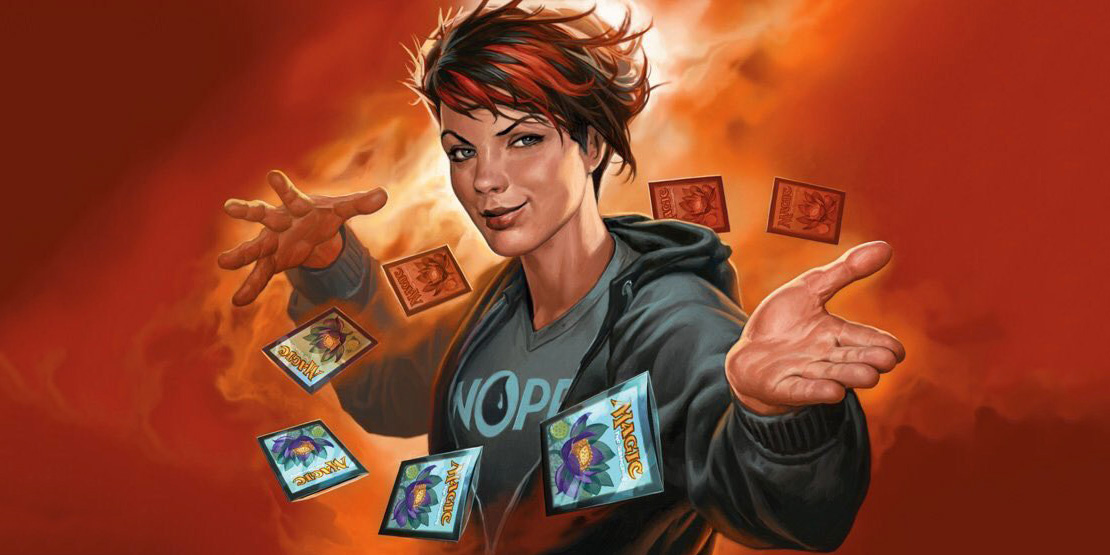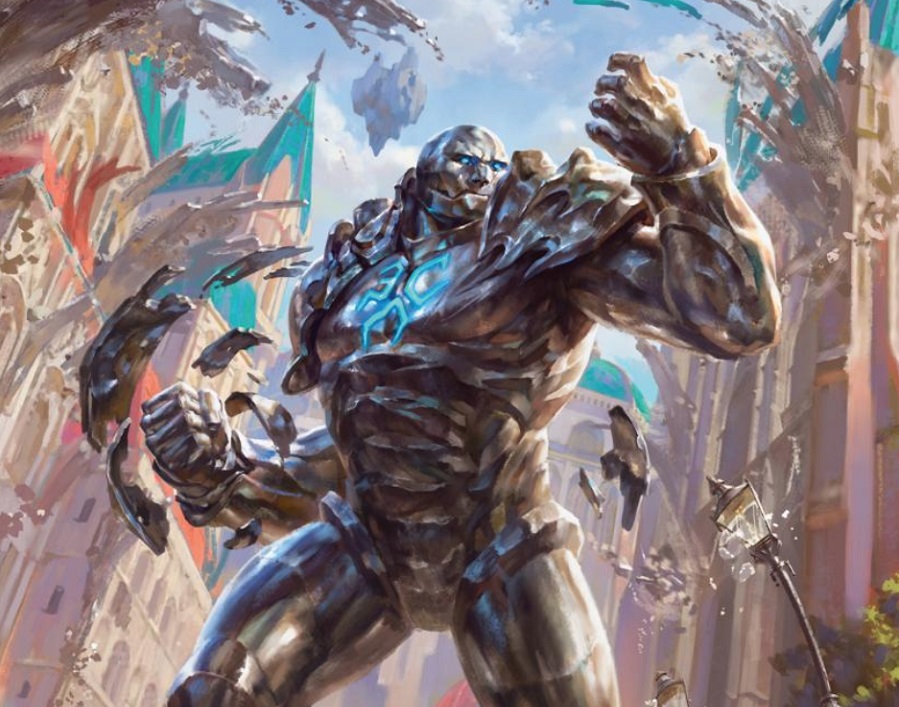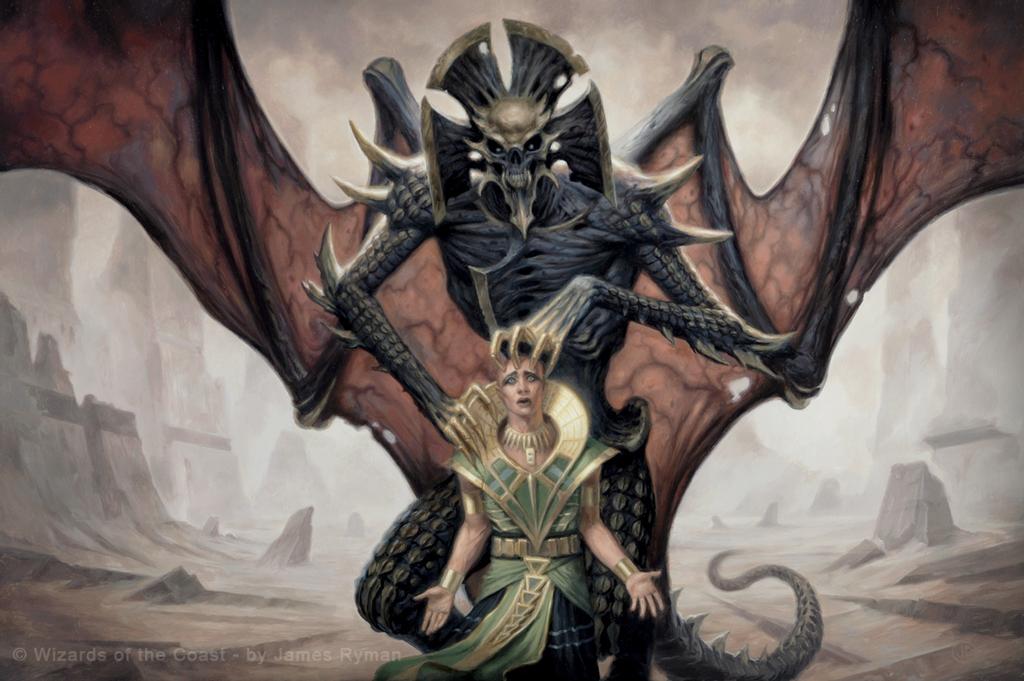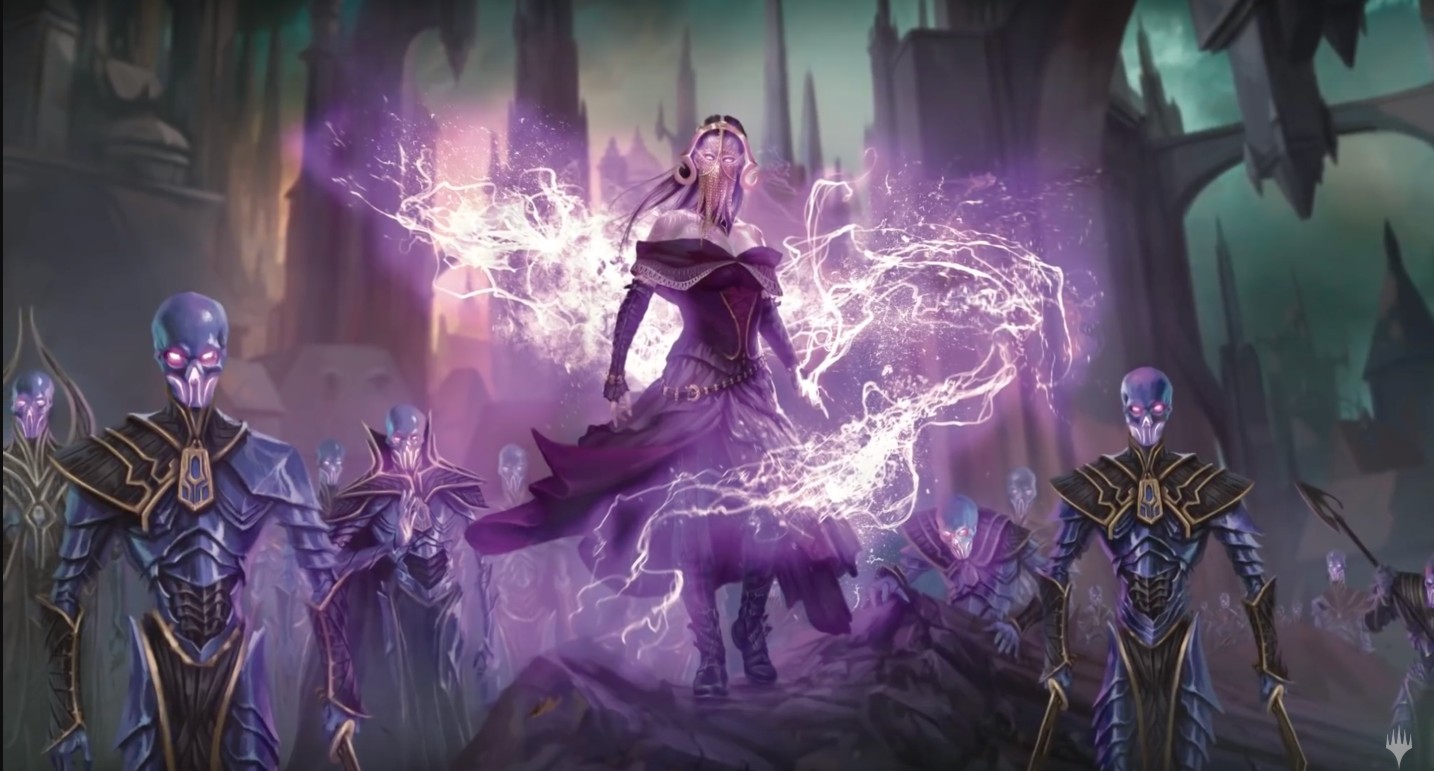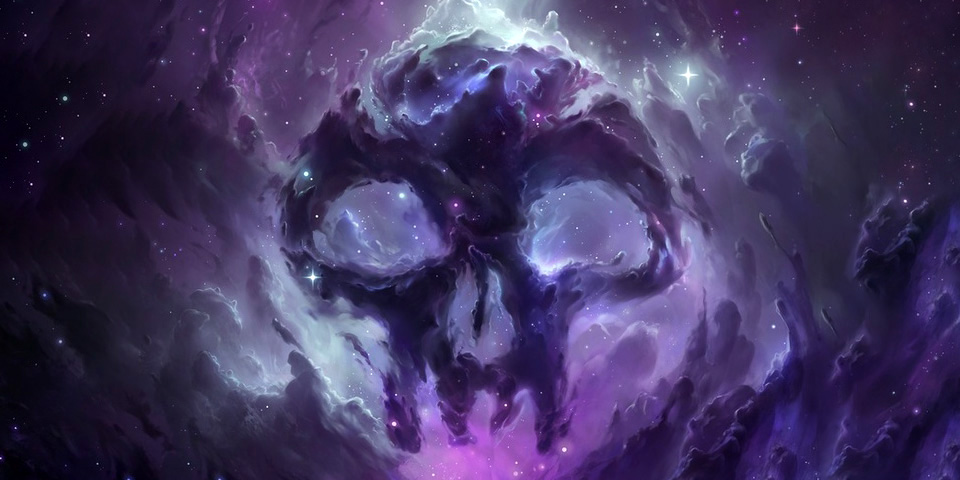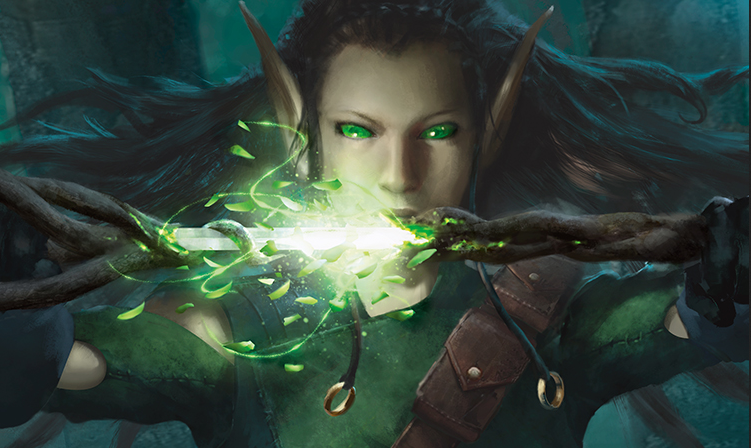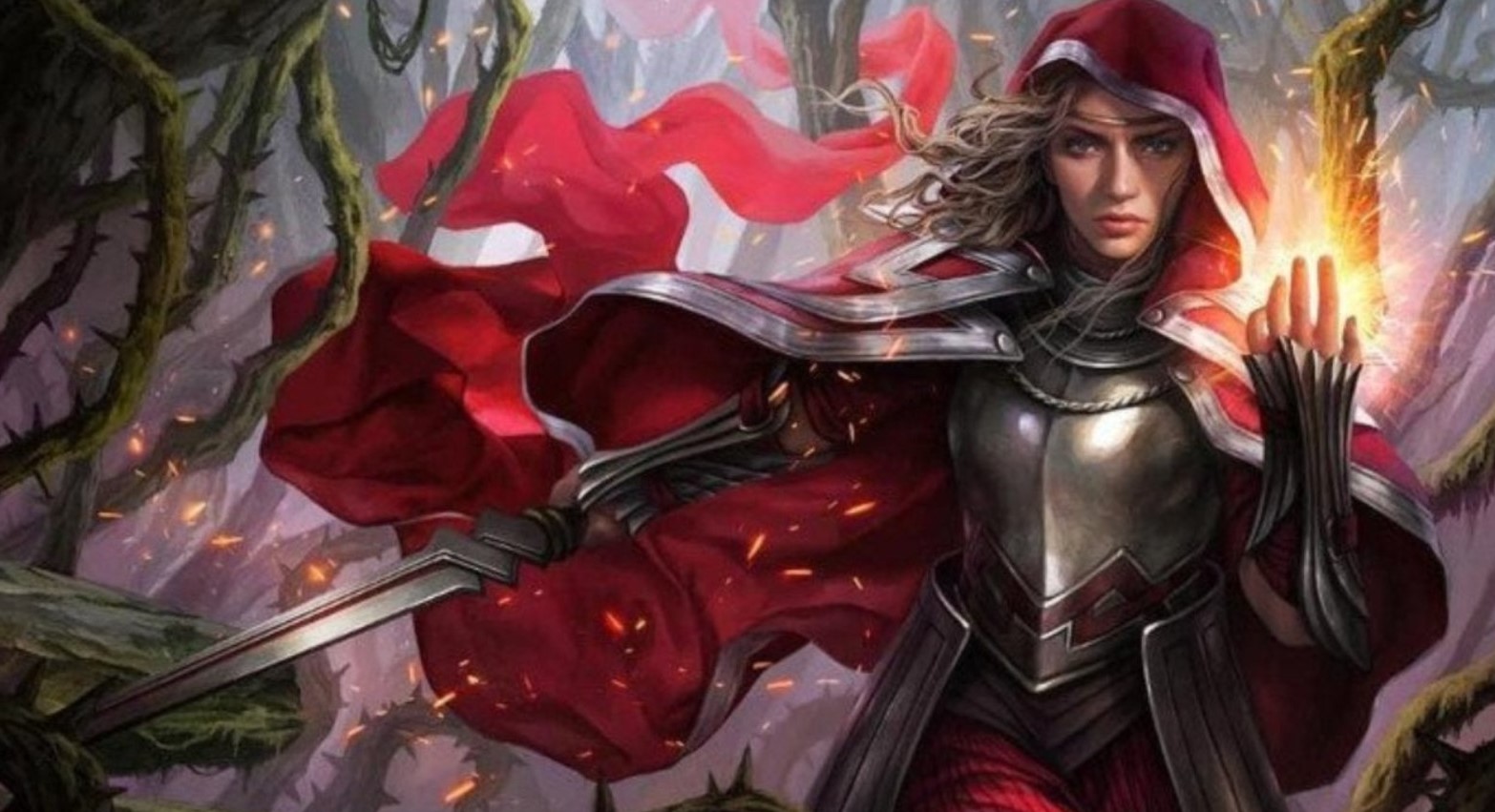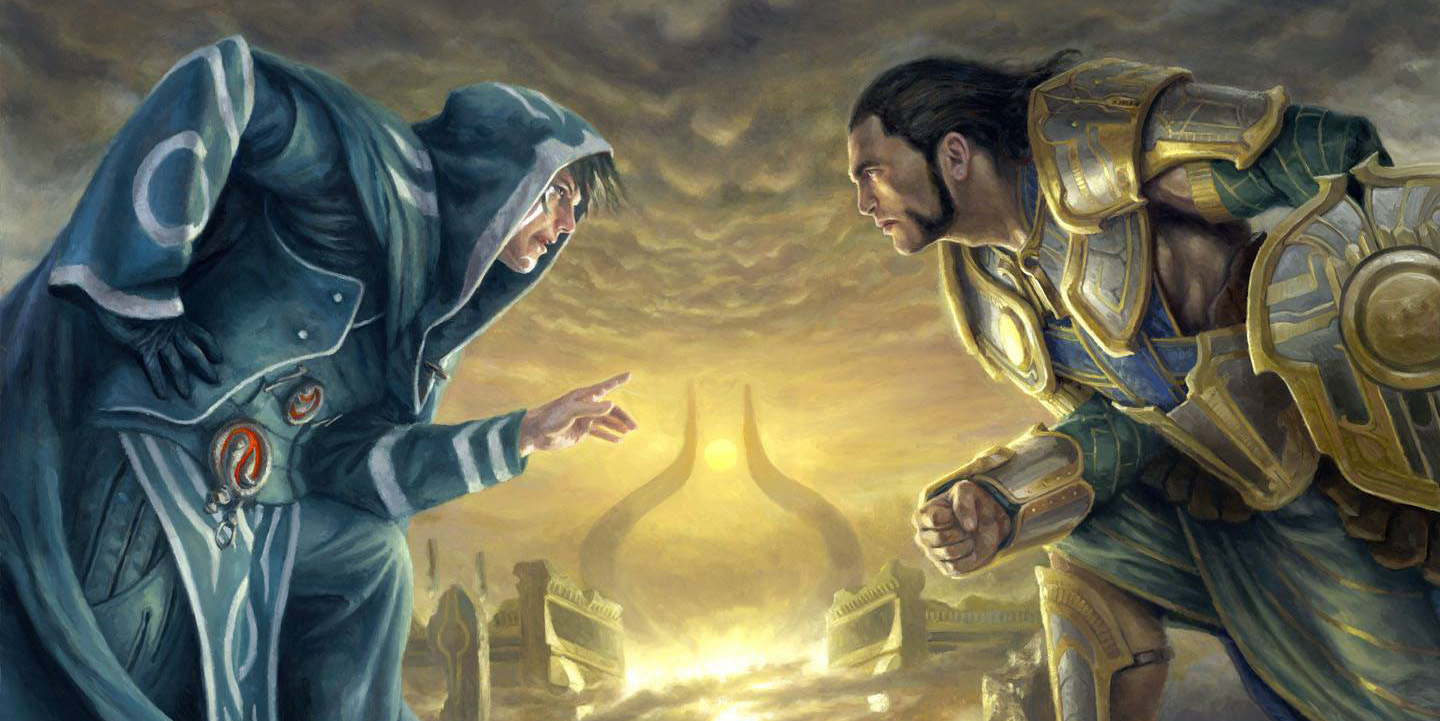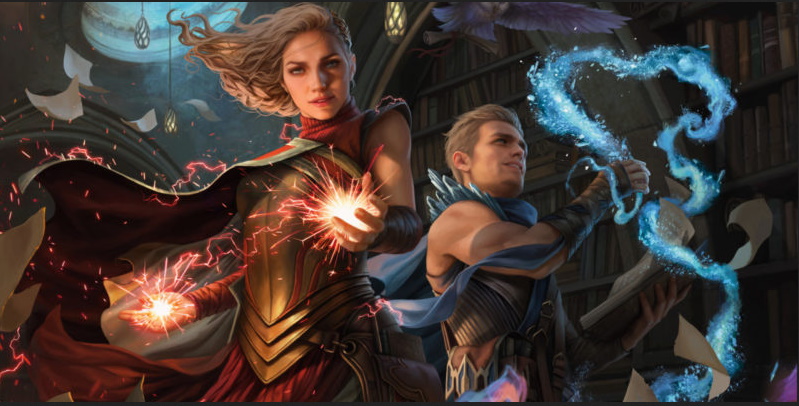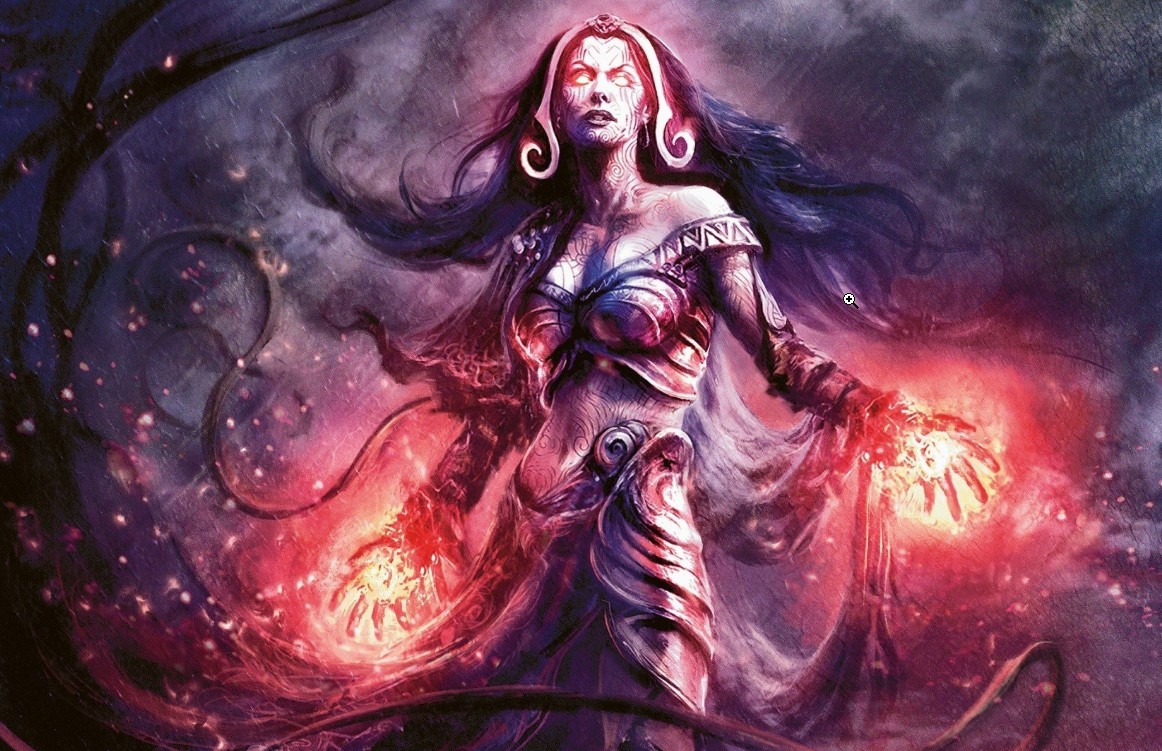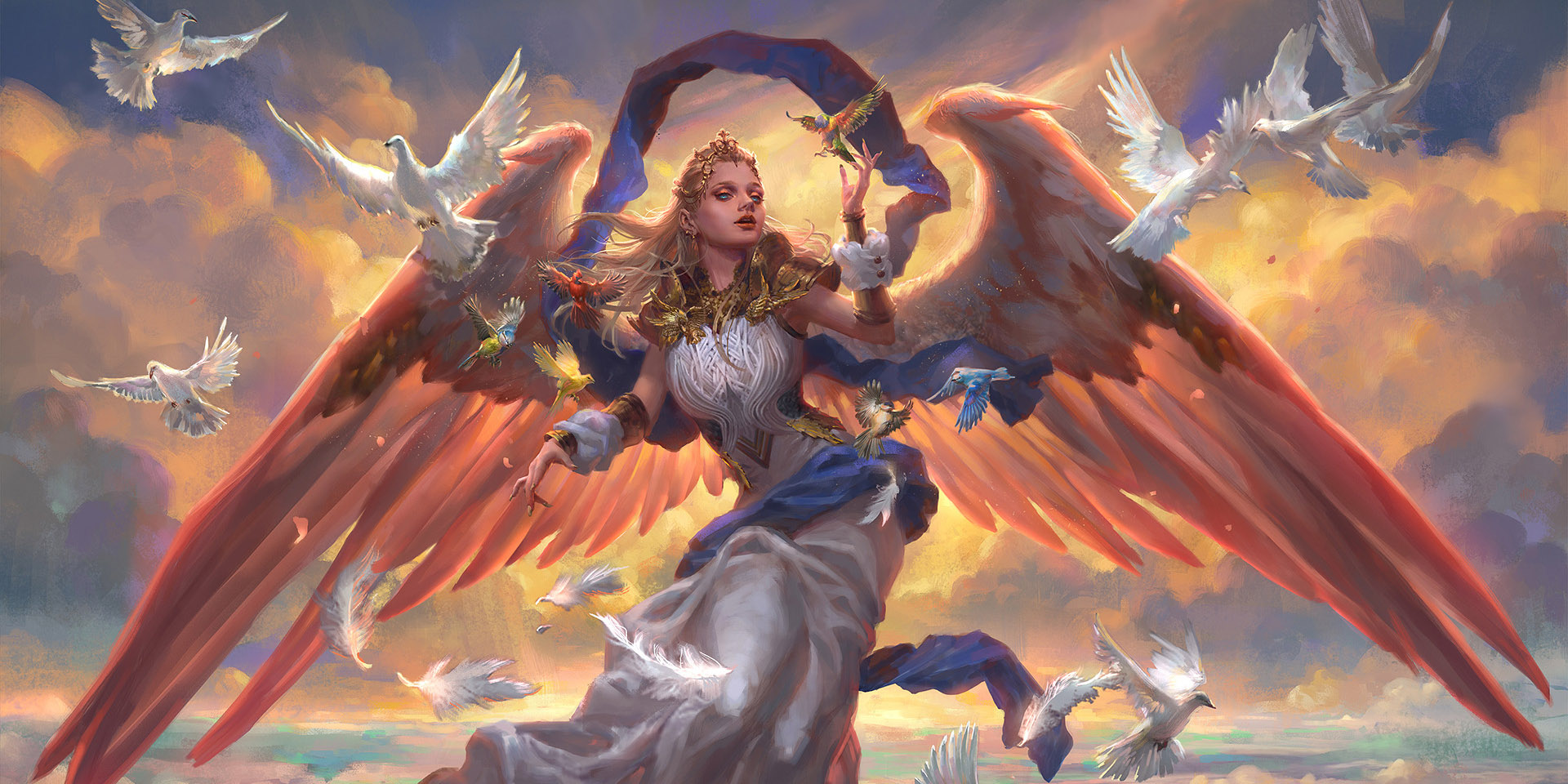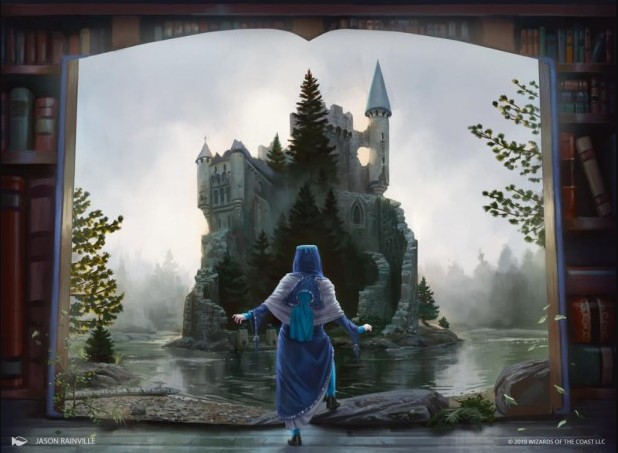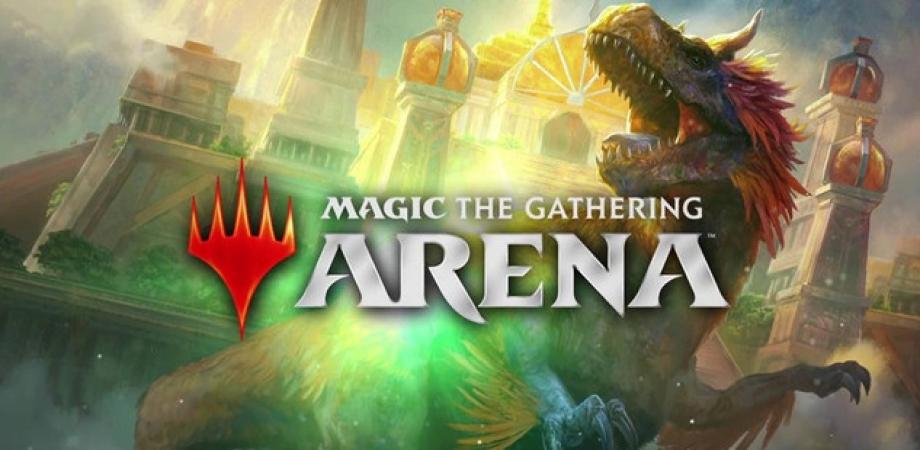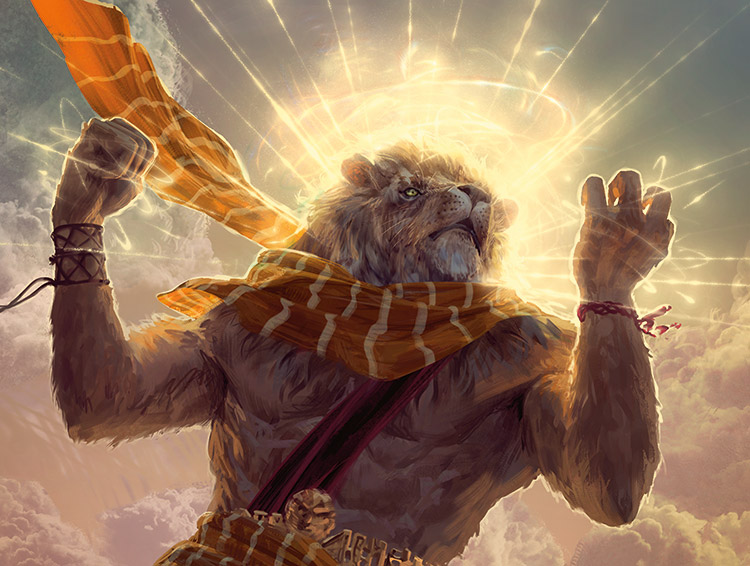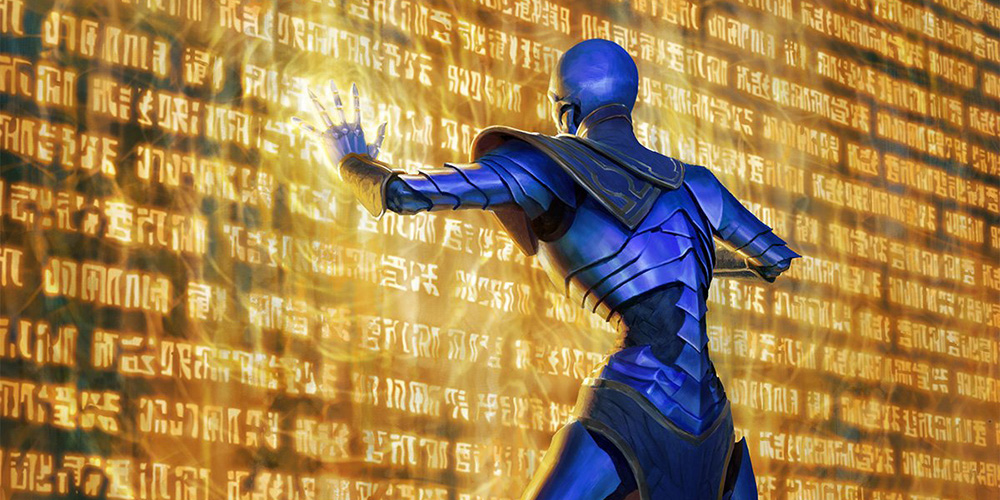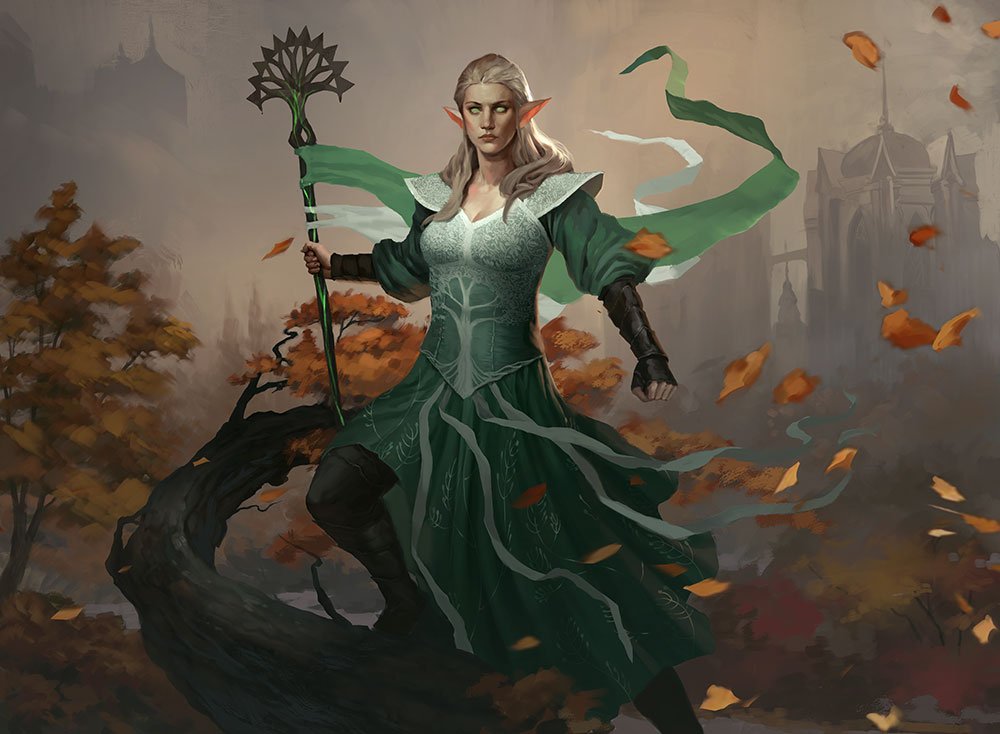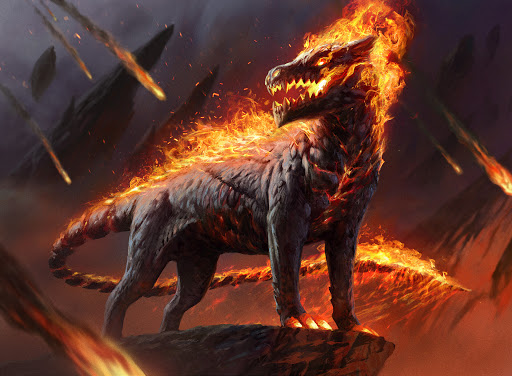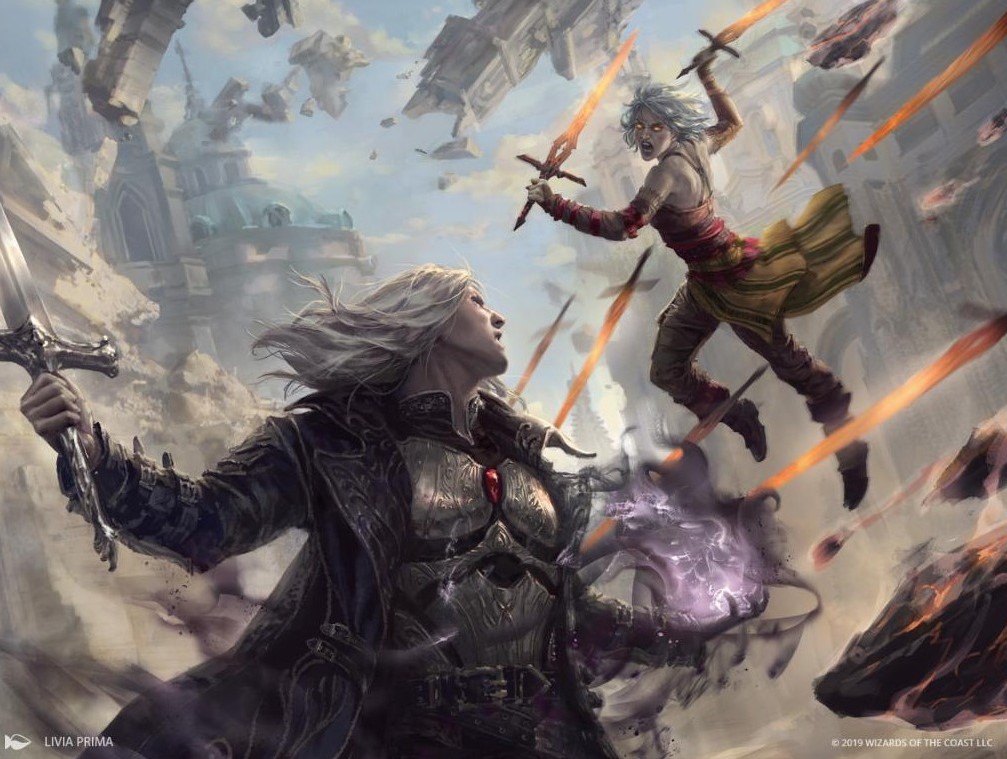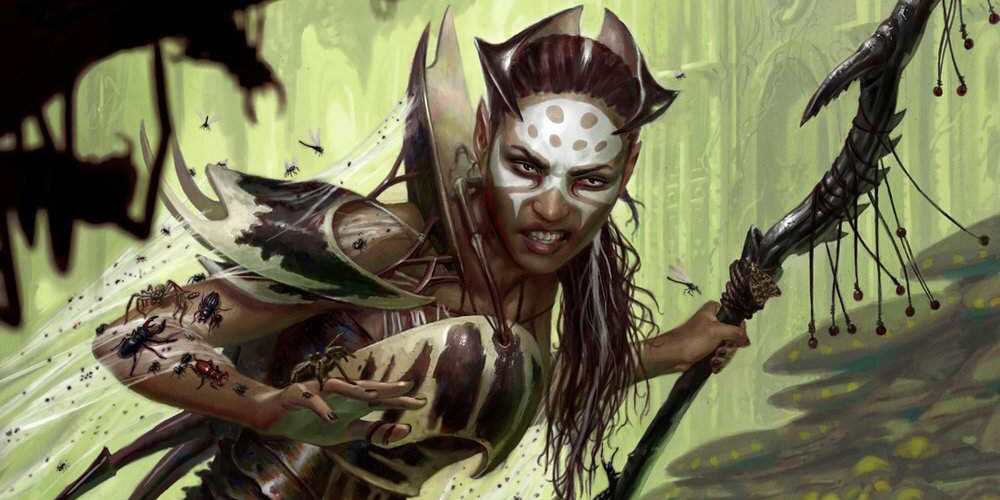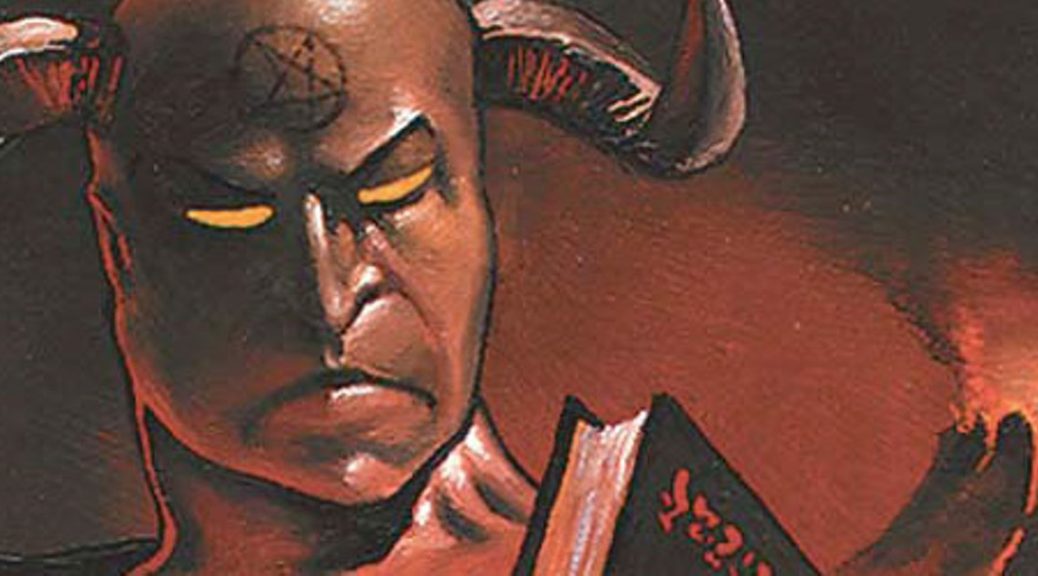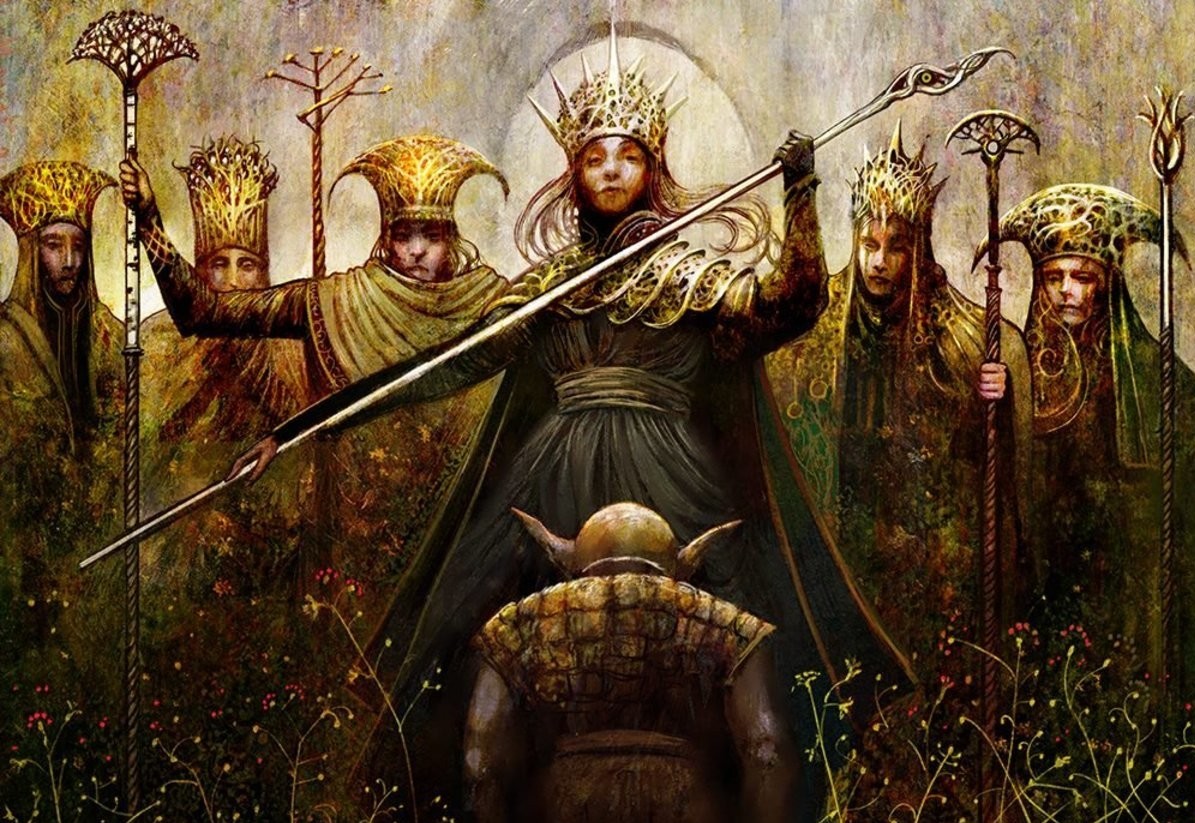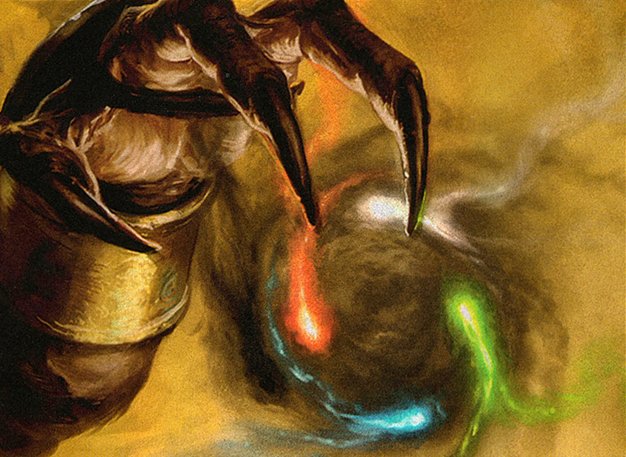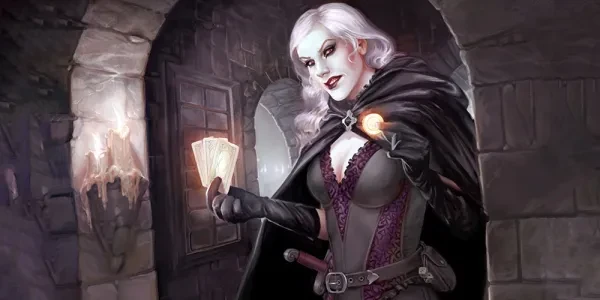
For players who are new to MTG Arena, making a cheap competitive deck from scratch can be a daunting task. With only a limited amount of wildcards, you simply afford to craft rare/mythic cards that might end up not being worth it. In this article, we'll be listing ten decks that give you the best chance to win given your limited resources.
10. Orzhov Clerics
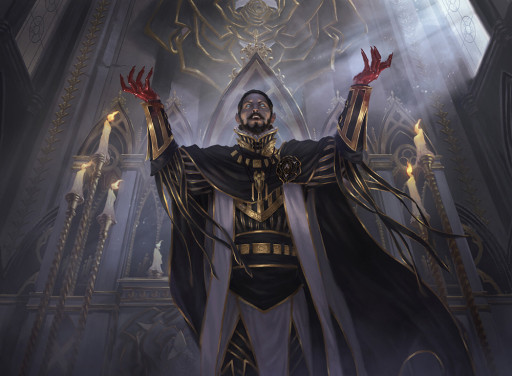
Vito turns all your wholesome life gain effects into deadly life drain.
Orzhov Clerics is a tribal deck using its creature synergy to gain extra life points and enable cards with life gain triggers. Despite having small base stats, your creatures have the means to grow and scale-up in the mid to late game. Vito, Thorn of the Dusk Rose is tailor-made for this deck as he’s a cleric with a powerful life gain trigger who can also give your entire team Lifelink.
What's good about this deck:
- Your cards' synergy makes the deck more powerful than the sum of its parts. For example, Alseid of Life's Bounty not only protects your payoff cards but also triggers them via Lifelink.
- Opposing creature decks will find it difficult to win damage races against you. This is because you can gain a lot of life and your creatures grow bigger over time.
- You have a way to attack your opponent's life points outside of combat. With Vito, your opponent isn’t safe even if they manage to stop you from attacking.
How to play this deck effectively:
- Your best hand consists of a one-drop, Cleric of Life's Bond, Righteous Valkyrie, and a couple of other clerics or removal spells.
- Sequencing is important to make sure you get the most out of your life gain triggers. Generally, you want to cast your life gain enablers first before your payoff cards.
- When you have a payoff card that lets you put +1/+1 counter like Hallowed Priest or Heliod, Sun-Crowned, you can use Soulmender’s life gain ability as a combat trick.
- Your ideal target for Unexpected Fangs is Cleric of Life’s Bond or Hallowed Priest. This lets them trigger their own abilities when through combat damage.
- Whenever possible, play Vito when you believe that the opponent has already spent their removal spells or when you can immediately take advantage of his abilities before he’s killed.
Cards:
Deck4 Soulmender
3 Alseid of Life's Bounty
1 Speaker of the Heavens
4 Cleric of Life's Bond
4 Impassioned Orator
4 Hallowed Priest
3 Vito, Thorn of the Dusk Rose
2 Heliod, Sun-Crowned
2 Righteous Valkyrie
2 Unexpected Fangs
4 Glass Casket
1 Shadowspear
3 Banishing Light
4 Scoured Barrens
3 Snowfield Sinkhole
1 Temple of Silence
9 Plains
6 Swamp
Rare/Mythic cards from your starter decks:
1 Speaker of the Heavens (Life Skills)1 Shadowspear (Life Skills)
1 Vito, Thorn of the Dusk Rose (Life Skills)
9. Izzet Flash
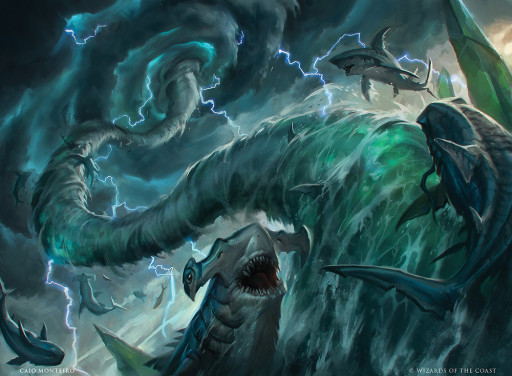
Raining cats and dogs doesn’t seem so bad when compared to this.
Izzet Flash takes advantage of threats and answers that can be played at instant speed. Your goal is to use disrupt what your opponent is doing and sneak in your creatures when an opportunity presents itself. Experimental Overload lets you make a big threat and get another chance to cast your best spell.
What's good about this deck:
- Your cards' synergy makes the deck more powerful than the sum of its parts. Wavebreak Hippocamp and Shark Typhoon are great payoff cards for your instants.
- It puts the fear of the unknown on your opponent. They always have to worry about surprise blockers or creatures coming out of nowhere and attacking them for lethal.
- You often win in close races, so this deck rewards tight play. It also frustrates players who are not good at reading their opponent's hand.
How to play this deck effectively:
- Depending on what deck your facing, your best hand should consist of cheap burn spells or counterspells plus some card draw.
- Use Brazen Borrower as temporary removal to gain tempo when racing against creature decks. Against control, don't hesitate to cast it early as a regular creature to pressure your opponent.
- Play your Wavebreak Hippocamp with mana left over to cast a spell on their turn if possible. This lets you at least get some value if they manage to immediately kill it.
- Don’t hesitate to Cycle Shark Typhoon early to get a blocker against aggressive decks. Preserving your life total is more important than hoping to cast it as an enchantment.
- Respond to your opponent’s spells as if you have a counterspell by waiting before letting it resolve. Making them play around cards you don’t have can make a difference in a close match.
Cards:
Deck3 Brazen Borrower
2 Bonecrusher Giant
1 Wavebreak Hippocamp
4 Frost Bite
2 Disdainful Stroke
2 Essence Scatter
2 Negate
4 Saw It Coming
2 Demon Bolt
1 Silundi Vision
4 Behold the Multiverse
4 Experimental Overload
1 Sublime Epiphany
4 Shark Typhoon
4 Volatile Fjord
2 Field of Ruin
2 Shimmerdrift Vale
1 Temple of Epiphany
9 Snow-Covered Island
6 Snow-Covered Mountain
Rare/Mythic cards from your starter decks:
1 Brazen Borrower (Spellpower)1 Bonecrusher Giant (Stomp, Stomp)
1 Wavebreak Hippocamp (Spellpower)
1 Sublime Epiphany (Massive Menagerie)
1 Shark Typhoon (Spellpower)
1 Temple of Epiphany (Spellpower)
8. Rakdos Sacrifice
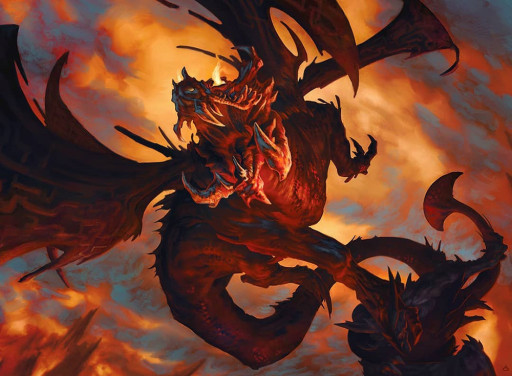
Even Arnold won’t stand a chance against this predator when it becomes indestructible.
This deck fills the graveyard by milling and trading off resources which lets you cast Kroxa, Titan of Death's Hunger through Escape. It's filled with steal effects and sacrifice outlets like Woe Strider and Immersturm Predator. The rest of the deck is filled with different assortments of value creatures such as Bonecrusher Giant, Murderous Rider, and Nightmare Shepherd.
What's good about this deck:
- Thanks to your Escape creatures and plenty of removal spells, you have a great matchup against the popular dimir rogues deck.
- Your threats are difficult to stop. Immersturm Predator can become indestructible and you can keep recasting your Escape creatures as long as you have enough cards in the graveyard.
- You have a way to attack your opponent's life points outside of combat through Kroxa. Its discard trigger also demands that they discard a nonland card or they’ll lose life anyway.
How to play this deck effectively:
- Your best hand consists of Kroxa, Titan of Death's Hunger, a self-mill creature, steal effects, a sacrifice outlet.
- Mulligan away your hand if it doesn't have cheap creatures or ways to interact with your opponent’s early creature such as Claim the Firstborn into Village Rites combo.
- If you cast Kroxa from your hand, remember that you can feed it to your sacrifice outlets while its death trigger is on the stack.
- Always use Nightmare Shepherd’s ability on the stolen creatures you sacrificed because you still get the option to exile and make a 1/1 token.
- When your Kroxa or Strider is in the graveyard, always look for ways to reach the number of cards you need to pay for its Escape cost.
Cards:
Deck4 Careless Celebrant
4 Mire Triton
3 Kroxa, Titan of Death's Hunger
4 Renegade Reaper
2 Woe Strider
1 Bonecrusher Giant
1 Murderous Rider
3 Immersturm Predator
1 Nightmare Shepherd
4 Claim the Firstborn
4 Village Rites
4 Shackles of Treachery
2 Witch's Cauldron
4 Bloodfell Caves
4 Evolving Wilds
1 Temple of Malice
8 Swamp
6 Mountain
Rare/Mythic cards from your starter decks:
1 Kroxa, Titan of Death's Hunger (Line of Fire)1 Woe Strider (Line of Fire)
1 Bonecrusher Giant (Stomp, Stomp)
1 Murderous Rider (Back for More)
1 Nightmare Shepherd (Back for More)
1 Temple of Malice (Line of Fire)
7. Mono-Green Stompy
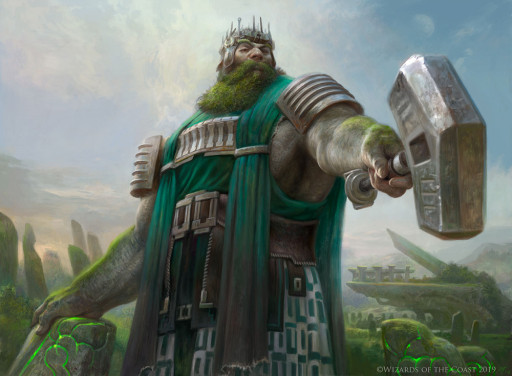
It’s always hammer time when Yorvo joins the fight.
Mono-Green Stompy hits hard and fast with creatures that have great power to cost ratio backed by creature-based removal. Since you’re only sticking to one color, you’re able to use mana-intensive cards like Old-Growth Troll and Yorvo, Lord of Garenbrig. This version has some snow synergy combined with a four-power theme.
What's good about this deck:
- It’s a competitive deck that’s simple and straightforward. You’re less likely to make mistakes when playing consecutive games in a tournament or spending hours ranking up the ladder.
- You have an advantage when facing other aggressive decks because your creatures are generally going to be bigger.
- Compared to budget multicolor decks, your deck doesn’t have the handicap of using tapped lands which is a big deal for an aggro deck.
How to play this deck effectively:
- Your best hand consists of creatures that go up the mana curve, Garruk’s Uprising, and some removal spells if you’re facing an opposing creature deck.
- Mulligan away hands that don't have early game creatures. You need to play threats going up the mana curve every turn.
- If your hand is light on lands, don’t hesitate to use Adventurous Impulse to dig for lands or play Bala Ged Recovery as a land. Hitting your early land drops outweighs the late game value.
- You don't need to commit many creatures to the board when playing against control. Your creatures have high power so even one is enough to force your opponent to cast mass removal.
- Don’t forget that you can directly attack your opponent’s life points by using Ram Through on your big creature with trample and your opponent’s low toughness creature.
Cards:
Deck4 Nessian Hornbeetle
4 Sculptor of Winter
3 Old-Growth Troll
3 Yorvo, Lord of Garenbrig
4 Rampart Smasher
1 Elder Gargaroth
1 Ironscale Hydra
4 Adventurous Impulse
4 Blizzard Brawl
1 Primal Might
4 Ram Through
2 Bala Ged Recovery
1 Shadowspear
4 Garruk's Uprising
20 Snow-Covered Forest
Rare/Mythic cards from your starter decks:
1 Elder Gargaroth (Massive Menagerie)1 Ironscale Hydra (To Adventure!)
1 Shadowspear (Life Skills)
6. Gruul Adventure
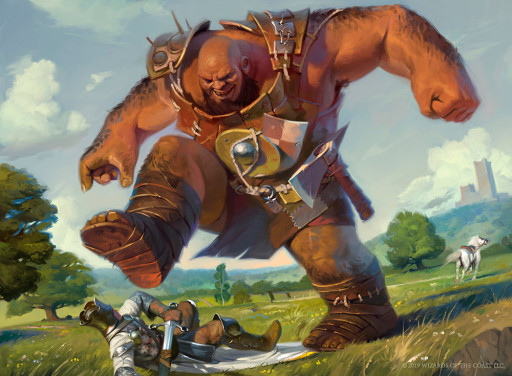
Stomp any creature below two toughness with this giant’s adventure side.
This Gruul Adventure deck builds on Stomp, Stomp which is the best out of the given starters. The classic strategy of early mana creatures ramping into powerful threats up your mana curve is as good today as it was in the early days of Magic. Radha, Heart of Keld and Terror of the Peaks are two notable haymakers that will end games fast if not dealt with.
What's good about this deck:
- You get to use a ton of rare and mythic cards from your starter decks. This means your deck is already fairly powerful, even before crafting
- It's easy to upgrade. You can add any creature you happen to get in packs as long as it has an efficient stats to mana cost ratio.
- You get both power and card advantage from your Adventure creatures. Not only do they have great stats to mana cost ratio, but they also draw cards through Edgewall Innkeeper.
How to play this deck effectively:
- Your best hand consists of Innkeeper, several creatures going up the mana curve, and an Embercleave.
- Don't attack with Innkeeper if your opponent's deck has cards that can ambush it. For example, Rogue decks have Flash creatures that while decks with blue might have Shark Typhoon.
- Attack first with your creatures before using your mana for other things. The threat of an Embercleave out of nowhere can force your opponent to make bad blocks.
- Save Return of the Wildspeaker for a lethal attack or when you have a decent-sized creature so you can draw at least three to four cards.
- Be wary of using your pump or fight spell when your opponent leaves mana open. In the early turns, it's often obvious that they have removal if they pass their turn without playing anything.
Cards:
Deck4 Edgewall Innkeeper
2 Embereth Shieldbreaker
2 Rimrock Knight
4 Brushfire Elemental
3 Bonecrusher Giant
3 Lovestruck Beast
1 Radha, Heart of Keld
4 Rampart Smasher
1 Elder Gargaroth
1 Terror of the Peaks
2 Fire Prophecy
2 Kazuul's Fury
2 Khalni Ambush
1 Primal Might
1 Return of the Wildspeaker
3 Embercleave
1 The First Iroan Games
4 Evolving Wilds
4 Rugged Highlands
1 Temple of Abandon
7 Forest
7 Mountain
Rare/Mythic cards from your starter decks:
1 Bonecrusher Giant (Stomp, Stomp)1 Lovestruck Beast (To Adventure!)
1 Radha, Heart of Keld (Stomp, Stomp)
1 Elder Gargaroth (Massive Menagerie)
1 Terror of the Peaks (Stomp, Stomp)
1 Primal Might (To Adventure!)
1 Return of the Wildspeaker (Stomp, Stomp)
1 Embercleave (Company of Knights)
1 The First Iroan Games (Stomp, Stomp)
1 Temple of Abandon (Stomp, Stomp)
5. Mono-Black Auras
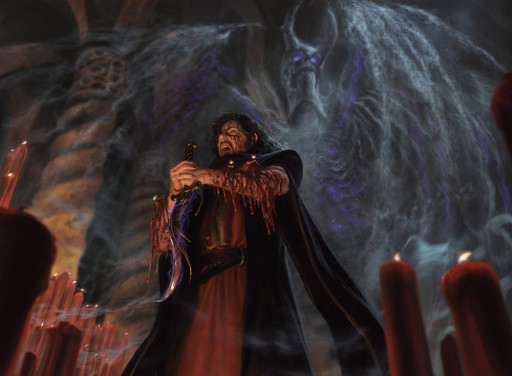
Don’t kill this guy unless you have a way to beat his inner demon.
Mono-Black Auras looks to kill your opponent’s creatures with negative stat auras to trigger Hateful Eidolon’s ability and draw cards. It’s filled with small creatures that can be sacrificed for value such as Archfiend’s Vessel and Serrated Scorpion then brought back by Call of the Death-Dweller. With the companion Lurrus of the Dream-Den, you can recast both the Eidolon and the auras from the graveyard.
What's good about this deck:
- The only mandatory rare is Lurrus so it’s very cheap to build. Fiend Artisan and Castle Locthwain can be crafted later on as you get the necessary wildcards.
- It preys on the many popular ladder decks that play a lot of small creatures such as Mono-White, Mono-Red Aggro, and Dimir Rogues.
- If the opponent fails to kill Eidolon immediately, your advantage will snowball in just a couple of turns.
How to play this deck effectively:
- Your best hand consists of Hateful Eidolon, Archfiend’s Vessel, several auras, and Call of the Death-Dweller.
- To make the most out of Village Rites, look for opportunities to cast it in response to an opponent's kill spells.
- When paying for the Escape cost of Mogis’s Favor, exile your instants/sorceries first because the creatures and enchantments can potentially be reused later.
- Make your land drop first before activating Castle Locthwain, to minimize the life you lose based on the number of cards in your hand.
- Hold on to your Malakir Rebirth and play other lands first if possible. This lets you use it to protect your Eidolon or get a demon out of the Archfiend’s Vessel by surprise.
Cards:
Companion1 Lurrus of the Dream-Den
Deck
4 Archfiend's Vessel
4 Hateful Eidolon
4 Serrated Scorpion
4 Mire Triton
2 Fiend Artisan
4 Village Rites
2 Malakir Rebirth
2 Heartless Act
4 Call of the Death-Dweller
4 Dead Weight
2 Mogis's Favor
2 Mire's Grasp
2 Castle Locthwain
20 Swamp
4. Dimir Rogues
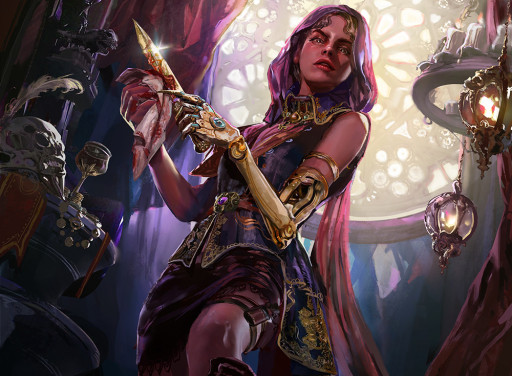
This femme fatale is a must-have for any rogue-based decks.
Dimir Mill pairs creatures with the Mill ability with cards that get better when your opponent's graveyard piles up with milled cards. Ruin Crab can block small creatures while your rogue creatures can also beat down if necessary. The rest of the deck contains counterspells, creature removal, and card draw spells.
What's good about this deck:
- You have different angles of attack. In general, your goal is to Mill out your opponent, but winning by damage through your rogues is also an option.
- Plenty of players find mill frustrating to play against, so you already have an advantage when it comes to the mental aspect of the game.
- Standard currently has no cards that protect against milling out. Gaea's Blessing is only in Historic and surviving to 12 counters with Midnight Clock is not realistic.
How to play this deck effectively:
- Your best hand consists of a Ruin Crab, several rogues, counterspells or removal for interaction, and Into the Story.
- Play Thieves’ Guild Enforcer before your other rogues. This gives you the chance to Mill the most amount of cards when you cast your other rogues.
- Unless you’re ambushing an attacker, wait until the end of your opponent’s turn to cast your rogues with Flash. This lessens the chance for them to die before you're able to attack.
- Cast your Lurrus with mana left over to immediately cast a creature from your graveyard. This lets you at least get some value if they immediately kill it.
- Always respond to your opponent as if you have a counterspell by pausing before letting it resolve. Making them play around cards you don’t have can make a difference in a close match.
Cards:
Companion1 Lurrus of the Dream-Den
Deck
4 Merfolk Windrobber
4 Ruin Crab
4 Thieves' Guild Enforcer
4 Soaring Thought-Thief
2 Malakir Rebirth
2 Bloodchief's Thirst
2 Heartless Act
4 Drown in the Loch
2 Didn't Say Please
2 Lullmage's Domination
3 Of One Mind
4 Into the Story
4 Evolving Wilds
4 Dismal Backwater
1 Temple of Deceit
8 Island
6 Swamp
Rare/Mythic cards from your starter decks:
1 Temple of Deceit (Mutation Station)3. Mono-White Aggro
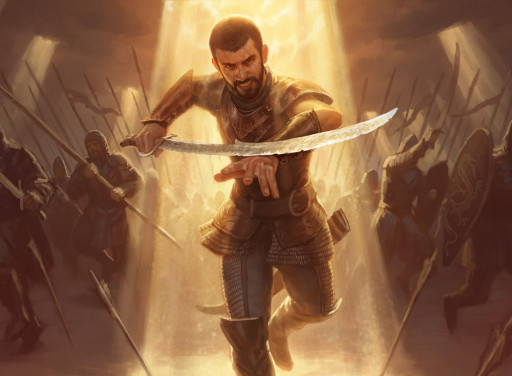
This warrior can keep charging into battle as long as you have cards to spare.
Mono-White Aggro uses small creatures and buffs them with +1/+1 counters from Luminarch Aspirant or Equipment such as Maul of the Skyclaves. Each creature comes with abilities that provide extra utility on a particular matchup. Alseid of Life’s Bounty/Selfless Savior protects your threats from kill spells and Luminous Broodmoth gives insurance against board wipes.
What's good about this deck:
- It’s simple and straightforward to play, so you’re less likely to make mistakes.
- You have cheap creatures that slip under control decks before they have the mana for counterspells.
- It’s much more affordable than multicolored decks because there’s no need to spend wild cards just for rare dual lands.
How to play this deck effectively:
- Your best hand consists of an Alseid/Savior, Seasoned Hallowblade, and Maul of the Skyclaves.
- Mulligan away hands that don’t have early game creatures. Playing your creatures on the curve during the first few turns is essential.
- Play Luminarch Aspirant and Kor Blademaster before combat, so your creatures can take advantage of the +1/+1 counter and Doublestrike bonus they give respectively.
- Apart from giving a stat boost, don’t forget that Resolute Strike also lets you attach an equipment card if you targeted a Warrior.
- Hold on to your Kabira Takedown and play other lands first if possible. This lets you use it as a kill spell in case you already have enough lands to use all your cards.
Cards:
Deck4 Selfless Savior
4 Usher of the Fallen
3 Alseid of Life's Bounty
4 Kor Blademaster
4 Luminarch Aspirant
4 Seasoned Hallowblade
1 Luminous Broodmoth
2 Resolute Strike
2 Kabira Takedown
4 Glass Casket
2 Relic Axe
2 Maul of the Skyclaves
2 Banishing Light
22 Plains
Rare/Mythic cards from your starter decks:
1 Luminous Broodmoth (Starry-Eyed)2. Mono-Red Aggro
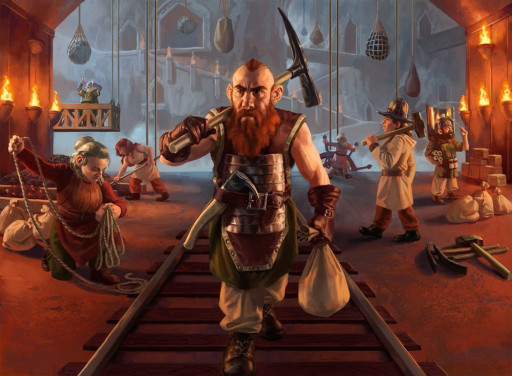
Can you find all the references to the number seven in this art?
Mono-Red Aggro is the ideal deck for anyone who wants to win as fast as possible. Your "strategy" is to cast all your creatures and attack while removing their blockers through direct damage or pump spells. You have board wipe insurance thanks to Anax, Hardened in the Forge, and a way to boost damage through Torbran, Thrane of Red Fell and Embercleave.
What's good about this deck:
- It’s a great choice for players making their first competitive deck. It’s straightforward to play and also fully upgradeable to a Tier 1 deck.
- You can finish most games in only a few turns. That's great if you want a quick way to finish your daily quests or progress up the ranking ladder.
- It's almost always viable in any metagame. Decks in Best-of-One can't afford to dedicate too many cards against Mono-Red because it will make their deck worse in other matchups.
How to play this deck effectively:
- Your best hand consists of a one-mana creature, a couple of Seven Dwarves, Anax, and Torbran/Embercleave.
- Don’t forget that you need to have at least three Snow-Covered Mountains for Frost Bite to do three damage.
- Before attacking with Seven Dwarves, make sure to cast your other copies first so they get the stat boost immediately.
- Fire blade Charger and Heartfire Immolator’s ability deals damage based on their power. Use Infuriate to give them enough power to take down much bigger creatures.
- If you already have an Anax on the battlefield, it's okay to cast your extra copy. Before one of them dies to the legend rule, both Anax will trigger so you will get four Satyrs.
Cards:
Deck4 Fearless Pup
4 Fireblade Charger
7 Seven Dwarves
4 Heartfire Immolator
4 Anax, Hardened in the Forge
2 Bonecrusher Giant
3 Torbran, Thane of Red Fell
3 Embercleave
4 Frost Bite
3 Infuriate
22 Snow-Covered Mountain
Rare/Mythic cards from your starter decks:
1 Bonecrusher Giant (Stomp, Stomp)1 Embercleave (Company of Knights)
1. Boros Cycling
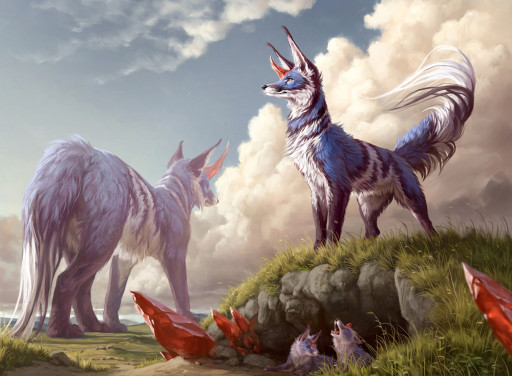
With a steady diet of Cycling cards, this petite fox becomes humongous.
Boros Cycling contains almost the same cards you'll find in a typical Ikoria draft deck. It’s made up of creatures or spells that care about Cycling and the rest of the deck is filled with Cycling cards. Lurrus of the Dream-Den is a free companion that lets you recast any of your creatures from the graveyard.
What's good about this deck:
- Except for Lurrus, it’s made up entirely of common and uncommon cards. Even if you don’t craft the companion, the deck is still more or less the same.
- This deck is very consistent because cycling lets you draw cards to find what you need.
- Your creatures generate a lot of value as the game goes go longer. One point of damage/life or an extra token adds up into a big advantage as you find more copies.
How to play this deck effectively:
- Your best hand consists of Flourishing Fox and a couple of your two-mana payoff creatures.
- Mulligan away hands that have no creatures or have too many lands. Playing a creature early is vital and you only need two lands to operate during the early game.
- As much as possible, avoid trading off creatures when you’re up against aggro decks. Your creatures’ abilities are worth more than a random creature from your opponent.
- Go for Blood should be last in the order of cards you can cycle. In certain matchups, you may want to cast it to kill your opponent’s most threatening creature.
- Save Zenith Flare for the very late game. The longer you wait, the more potential it has to hit for up to double-digit damage.
Cards:
Companion1 Lurrus of the Dream-Den
Deck
4 Flourishing Fox
4 Drannith Healer
4 Drannith Stinger
4 Valiant Rescuer
4 Zenith Flare
4 Footfall Crater
4 Go for Blood
4 Startling Development
4 Memory Leak
3 Frostveil Ambush
3 Boon of the Wish-Giver
11 Plains
7 Mountain
You may also be interested in:
- The 10 Best MTG: Arena Decks
- MTG Arena Guide, Tips and Tricks
- Best Ways to Get Wildcards in MTG Arena
- [Top 7] MTG Arena Best Artifact Decks That Wreck Hard!
- [TOP 5] MTG Arena Best Control Decks
- [Top 10] MTG Arena Best Historic Decks That Wreck Hard!
- MTG Arena Best Packs To Buy – A Guide for Beginners and Intermediate Players
- MTG Arena: Best Ways to Get Cards
- Top 15 Best MTG Arena Mythic Rares
- MTG Arena Ranking System Explained
- The Best Singleton Decks in MTG Arena
- [Top 5] Best MTG Arena Aggro Decks
- [Top 5] MTG Arena Best Angel Decks
- [Top 10] MTG Arena Best White Decks
- [Top 10] MTG Arena Best Black Decks

